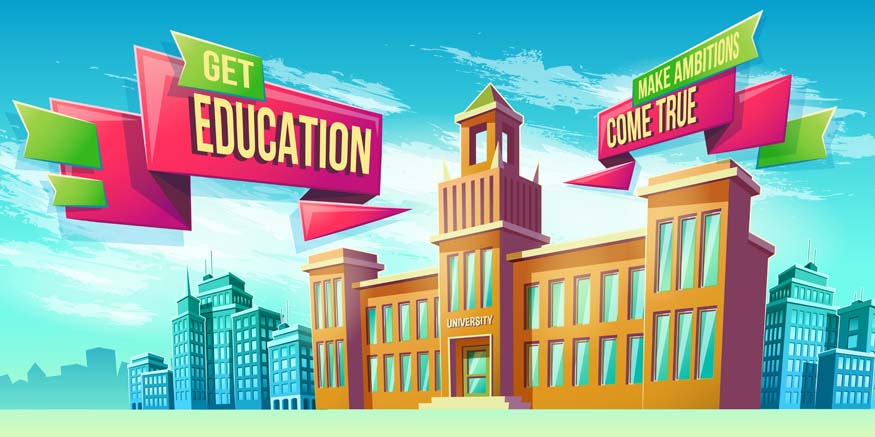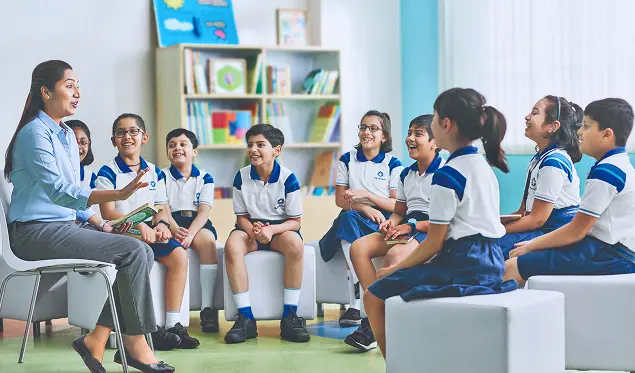From writing examinations to making presentations, and completing assignments and projects, students are constantly required to retain and recall vast amounts of information. There is no denying that memory plays such a vital role in a student’s learning process. Sometimes it can get overwhelming for students to remember these large amounts of information. That is when mnemonic techniques can be incredibly helpful.
Mnemonic techniques enhance memory by enabling quick learning and retention of new information. In this blog, we will explore the different mnemonic techniques that students can use to improve their memory.
Also Read: What is Kinesthetic Learning? Meaning, Style, Examples, Activities
The science behind Mnemonics
Effective memory functions consist of three operations – encoding, storing and retrieval. Mnemonic techniques are rooted in the science that our brains are wired to remember images and stories more effectively than plain facts and figures. Mnemonics use these three memory functions of the brain to help students improve their ability to memorise information. Some of the mnemonic techniques to improve memory are:
1) Association
In this technique, students associate new information with things they already know or are familiar with. For example, to remember the name of a new student, he or she can associate their name with a famous person or a celebrity with the same name. This technique can also be used to remember dates, events, and other important facts. By linking new information to familiar concepts, the brain can easily encode and retrieve information whenever required.
2) Acronyms and Acrostics
Using acronyms and acrostics is another popular way to improve memory. Acronyms are shorthand methods where each letter of a word represents a particular concept or piece of information. For example, a popular acronym used to remember the Great Lakes of North America is HOMES, which stands for Huron, Ontario, Michigan, Erie, and Superior.
Similarly, acrostics are memory aids that use the first letter of each word in a phrase to create a new phrase or sentence that can be easier to remember. For example, countries of the world can be remembered with the following acronyms: My very eager mother just served us nine pizzas (Mercury, Venus, Earth, Mars, Jupiter, Saturn, Uranus, Neptune, Pluto). The acrostic “Every Good Boy Deserves Fudge” is used to remember the notes on a musical staff (E, G, B, D, F).
3) Visual Imagery
Visual imagery is a very powerful mnemonic technique that can help students remember information that is hard to recall. Students can create a mental picture of the new information they are trying to remember by visualising a scene in their minds.
For example, when trying to remember the name of a new student in class, students can create a mental picture of the person and associate it with something in their mind. This technique can help students remember names, dates, phone numbers, and other important information.
4) Rhymes and Songs
Rhyme and song are popular mnemonic techniques used to help students remember important information. Rhyme is when the final syllables of the words used have the same sound, while songs are musical pieces that help students remember important pieces of information. Students can create a rhyme or a song that contains the information they need to remember, making it easier to recall when necessary.
For example, the rhyme “In fourteen hundred ninety-two, Columbus sailed the ocean blue” is used to remember the year that Columbus discovered America.
5) Chunking
Chunking is a technique that involves breaking down new information into smaller, more manageable units. By dividing information into smaller groups, students can remember them more easily. For example, when learning a new phone number, it can be easier to remember if it is broken down into smaller groups, such as (918)-555-1234 instead of 9185551234.
6) The method of Loci / Memory place
The method of Loci also known as the Memory Palace technique involves creating a mental “palace” or building and filling it with memorable images that represent the information you want to remember. It is creating a mental association of information to be remembered with specific locations within an imagined familiar space. For example, if you are trying to remember a list of items or words, you might imagine walking through a house and associating each item on the list with a specific room. When you need to recall the words later, you can mentally “walk” through your house and remember the associated image for each word.
Also Read: Benefits of learning a second language in a child’s development
Tips for creating your own Mnemonics
Like any learning technique, using mnemonics requires one to be aware of the common challenges they face when applying mnemonics and how to overcome them. Using mnemonics requires consistency, patience and creativity. Students must understand that mnemonics are used only for the retention and recall of information and are to be used as complementary tools in their learning process. Here are some tips to get you started on creating your own mnemonic devices:
1) Using humour
Using humour would help make information more memorable. Associating a funny image or a song with the information you want to remember would make a powerful memory.
2) Using emotions
Creating an association that links the information you want to remember to strong emotions such as fear, joy, or excitement. Mnemonic techniques that evoke emotions help in enhancing memory. Emotionally charged or humorous associations create a deeper connection with the information, making it more memorable and easier to recall.
3) Practising and repeating
When first using mnemonic techniques, students may find it difficult to create associations or even remember the associations they make. It is important to practise and remain persistent and consistent with using the various mnemonic techniques.
Also Read: Hard skills for students: what they are and how to develop them
Conclusion
Students can use a range of mnemonic techniques to help improve memory. Association, acronyms, visual imagery, rhymes and songs, and chunking are just a few of the techniques that students can use in their learning experience.
By incorporating mnemonic techniques into their teaching methods, EuroSchool empowers students to not only excel academically but also develop valuable cognitive skills that can benefit them throughout their lives.









